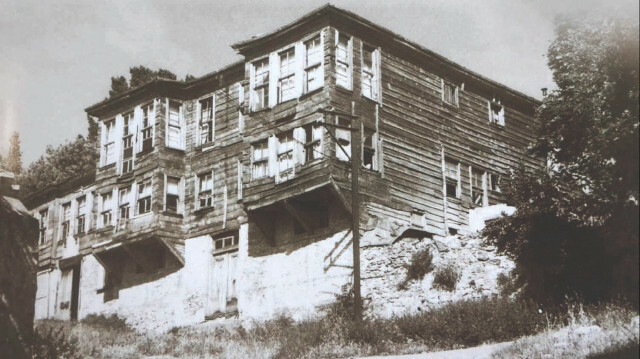Феномен «текке» в контексте духовно-культурной идентичности тюрко-мусульманских народов (середина XIX – начало XX века)
Научная статья
Просмотры: 538 / Загрузок PDF: 157DOI:
https://doi.org/10.32523/3080-129X-2025-150-1-28-45Ключевые слова:
Стамбул, дервишские текке, Центральная Азия, тюркско-мусульманские народы, паломничество, Османская империя, Российская империяАннотация
В статье рассматривается значимость текке Анатолии как духовно-религиозных центров, оказывавших влияние на формирование исламской идентичности тюркских народов Центральной Азии. Исследование базируется на анализе восточной археографии и книжной традиции, выявляющей процессы сбора, сохранения и изучения мусульманских рукописей. Одной из ключевых задач является изучение роли текке в паломничестве, мусульманском образовании и культурно-религиозном развитии тюркских народов. Исторические источники свидетельствуют о тесной взаимосвязи между рукописной традицией и функционированием текке, поскольку именно в этих институтах осуществлялось хранение, переписывание и распространение богословских трудов, философских трактатов и литературных памятников исламской традиции. Важно отметить, что текке не только выполняли религиозную функцию, но и служили связующим звеном между различными регионами, поддерживая культурно-духовное единство тюрко-мусульманского сообщества. Теоретическая основа исследования опирается на концепции культурной археографии и историко-культурного анализа, рассматривающие рукописные источники как элементы коллективной памяти, способствующие передаче религиозных знаний и духовных практик. Методологический подход включает сравнительно-исторический метод, археографический анализ текстов, а также изучение социального, этнополитического и этнорелигиозного контекста деятельности текке. Результаты исследования подтверждают, что узбекские текке Анатолии играли ключевую роль в трансформации духовных и образовательных практик тюрко-мусульманских народов, особенно в условиях социальной и политической нестабильности конца XIX – первой четверти XX вв. В статье обосновывается гипотеза о том, что текке в Османской империи выполняли важнейшую функцию в интеграции тюрко-мусульманских паломников, становясь пространствами религиозной консолидации. Они обеспечивали поддержку тюркоязычным мусульманам, прибывавшим в Стамбул, способствовали распространению суфийских учений и выполняли миссию по сохранению исламских традиций. Их вклад в развитие исламского образования и культурной коммуникации между регионами обусловливает необходимость дальнейшего изучения их рукописного наследия, что открывает перспективы для более глубокого понимания религиозных и этнокультурных процессов в тюркском мире
Скачивания
Библиографические ссылки
Anisimov O. The In Russian Empire as a Regulator of the Hajj and In Russian Orthodox Pilgrimage. Bulletin of Saint Petersburg University. History. 2023. Vol.68, no.2, рр.549‒556. https://doi.org/10.21638/spbu02.2023.215 (in English) DOI: https://doi.org/10.21638/spbu02.2023.215
Davletshin A. Report of Staff Captain Davletshin on his Mission to Hejaz. St. Petersburg: Military Printing Hous. 2018. 170 р. https://bspu.ru/files/53762 (in Russian)
Green N. Sufism: A Global History. Oxford: Wiley-Blackwell. 2012. https://www.academia.edu/3609878/Sufism_A_Global_History_Oxford_Wiley (in English)
Güler M. The Phenomenon of Hajj in Kyrgyzstan from the 19th Century to the Present and the Ottoman Empire’s Approach to Pilgrims of the Region. Afyon Kocatepe University Journal of Social Sciences. 2016. Vol.18, no.1, рр.1‒16. https://acikerisim.aku.edu.tr/xmlui/handle/11630/4345 (in Turkish) DOI: https://doi.org/10.5578/jss.10884
Erşahin S. The Ottoman Empire and the Hajj Expeditions of Turkestan Muslims (From the Tsarist Period to the Present). Diyanet Scientific Journal. 1999. Vol.35, no.1. (in Turkish)
Inalcık H. The Ottomans and the Caliphate. Islamic History: Culture and Civilization. Istanbul: Kitabevi. 1997. 267 p. (in Turkish)
Ishaev Sh. Mecca, the Sacred City of Muslims (Part One). Central Asian Bulletin 1996. No.1‒2. https://www.vostlit.info/Texts/Dokumenty/Arabien/XIX/1880-1900/Isaev/pred.phtml?id=5320 (in Russian)
Kulshanova A. Jadidism: ideology, conceptual approaches and practice. Bulletin of L. Gumilyov Eurasian National University. Historical Sciences. Philosophy. Religion Series. 2022. Vol.138, no.1, рр.59‒71. https://doi.org/10.32523/2616-7255-2022-138-1-59-71 (in English) DOI: https://doi.org/10.32523/2616-7255-2022-138-1-59-71
Lifchez R. The Dervish Lodge: Architecture, Art, and Sufism in Ottoman Turkey (Comparative Studies on Muslim Societies) ‒ Hardcover. Publisher: University of California Press. 1992. (in English)
Litvinov V. Religious Pilgrimage: A Regional Aspect (The Example of Turkestan in the Middle Ages and Modern Times). Yelets: I.A. Bunin Yelets State University. 2006. 377 р. (in Russian)
Miropiev M. The religious and political significance of the Hajj, or the holy journey of Muhammad to Mecca for religious celebration. In: The Missionary anti-Muslim collection. The works of the missionary anti-Muslim department students at the Kazan Theological Academy. Issue XV. Kazan: Tip. Imperial University. 1881. 251 p. (in Russian)
Naumkin V. Russian Diplomat in the Vilayet of Islamic Holy Sites in the Beginning of the Twentieth Century. Scientific information-analytical, cultural and educational journal "State, Religion, Church in Russia and abroad". 2020. Vol.38, no.1, рр. 229‒260. DOI: https://doi.org/10.22394/2073-7203-2020-38-1-229-260 (in Russian) DOI: https://doi.org/10.22394/2073-7203-2020-38-1-229-260
Neflyasheva N. The In Russian Empire: The Hajj Experience. Similarities and Differences in Regional Strategies (1870s). In: II Inter-University Scientific Conference "Russia and the Modern World: Problems of Political Development": Proceedings. Moscow. 2006. Рp.19‒34. https://iaas.msu.ru/wp-content/uploads/2022/03/2019-2.pdf (in Russian)
Nikolskiy M. Muslim Pilgrimage to Mecca (Part One). Historical Bulletin. Vol. XXIV, No.5. https://www.vostlit.info/Texts/Dokumenty/Arabien/XX/1900-1920/Nikolskij/text2.phtml?id=5326 (in Russian)
Özyüksel M. Hejaz Railway. Istanbul: Tarih Vakfı Yurt Publications. 2000. Рp. 215‒227. https://dergipark.org.tr/tr/download/article-file/9873 (in Turkish)
Sarınay Yu. Ottoman-Turkestan Relations in the Documents of the Turkish State Archives T.C. Prime Ministry State Archives General Directorate, Ottoman Archives Department, Publication: Ankara. 2005. 197 p. (in Turkish).
Sarınay Yu. The Center for the Pilgrims of Turkestan as the Visit Destination in Istanbul. Bilig – Journal of Social Sciences of the Turkic. 2019. No.88, рр.1‒18. https://doi.org/10.12995/bilig.523058 (in Turkish) DOI: https://doi.org/10.12995/bilig.523058
Saydazimbayev S. Report of Sayd-Gani Saydazimbayev on the Movement of Muslim Pilgrims to Mecca in 1908. St. Petersburg. 1909. https://www.academia.edu/7719045/Ferghana_Valley_The_Heart_of_Central_Asia (in Russian)
Senyutkina O. Guseva Ju. The Discourse on. In: Russian Muslims in the Documents of the Special Conferences of 1905–1914. State, Religion, Church in Russia and Abroad. 2018. No.4, рр. 231‒254. DOI: https://doi.org/10.22394/2073-7203-2018-36-4-231-254 (in Russian) DOI: https://doi.org/10.22394/2073-7203-2018-36-4-231-254
Shagyrbaev A. The Religious Views of Mashkhur Zhusup Kopeyuly. Almaty: Institute of Philosophy, Political Science and Religious Studies of the Ministry of Education of the Republic of Kazakhstan. 2018. 223 р. (in Kazakh)
Timaev K. Muslim Pilgrimage. Turkestan Courier. 1909. Vol.106(107). (in Russian)
Yamaeva L. Muslim Deputies in the State Duma of Russia. 1906‒1917. In: A Collection of Documents and Materials. Ufa. 1998. 376 р. https://search.worldcat.org/title/Musulmanskie-deputaty-Gosudarstvennoj-dumy-Rossii-1906-1917-gg.-:-sbornik-dokumentov-i-materialov/oclc/43112026 (in Russian)
Yarovoy-Ravsky V. Pilgrimage (Hajj) to Mecca and Medina. In: Collection of Materials on Islam. 1(1). St. Petersburg. 1889. https://idmedina.ru/books/history_culture/?2530 (in Russian)

Загрузки
Опубликован
Выпуск
Раздел
Лицензия
Copyright (c) 2025 М. Эгамбердиев , А. Азмұханова а

Это произведение доступно по лицензии Creative Commons «Attribution-NonCommercial-NoDerivatives» («Атрибуция — Некоммерческое использование — Без производных произведений») 4.0 Всемирная.














